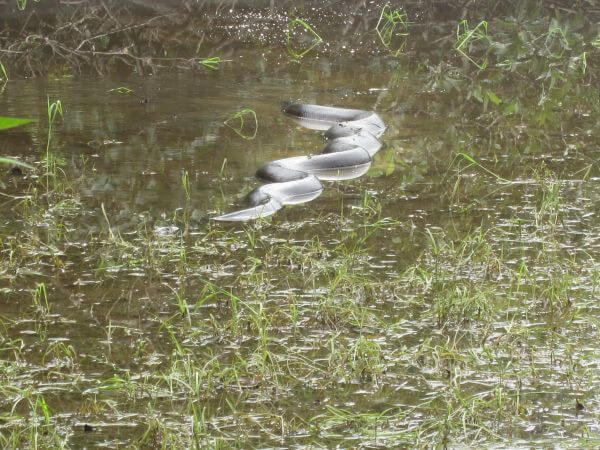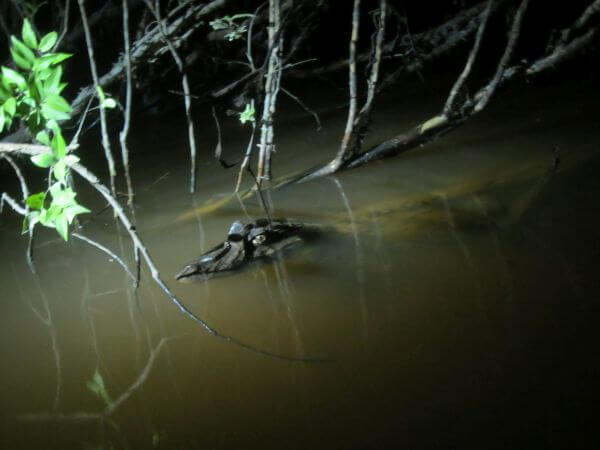Cuyabeno
The Cuyabeno Nature Reserve is located in the Amazon basin in northeastern Ecuador. It covers an area of approximately 6000 km2 of dense rainforest around the

Cuyabeno River, which is flooded during the rainy season. The nature reserve also includes protected areas for 5 indigenous territories. The equator runs through the protected area, the border with Colombia is not far. The area is one of the most biodiverse places on earth. There are 11 indigenous village communities in Cuyabeno. They are assigned to the groups of Cofán, Siona, Secoya, Kichwa and Shuar. A trip to Cuyabeno therefore offers unforgettable impressions. The contrast to the highlands is very noticeable.
Fauna
The fauna includes 165 mammal species. Jaguar and puma are the biggest hunters, but very rarely seen. The largest mammal is the lowland tapir. Furthermore, there are giant otters, capybaras, anteaters, armadillos and 10 species of monkeys. In the rivers, the Amazon dolphin is found. Of the approximately 500 species of birds, the parrots are the most striking. Anacondas are the largest species of snake. There are some species of conspicuous colored poison dart frogs, some of which being very poisonous. In addition, numerous caimans live on the banks of the rivers. On canoe tours, good guides track them down the riverbank. In the water live numerous fish, among them several types of piranhas.

History
The nature reserve was founded in 1979 to protect the rainforest. In addition, indigenous residents should be offered the opportunity to continue their traditional way of life. Nevertheless, parts of the reserve were soon released for oil production. The oil cities Tarapoa and Cuyabeno and a pipeline soon appeared.
Various groups were involved in preserving the reserve and the stop of the oil production. They achieved that the government moved the borders a bit further east and south. In addition, the establishment of sentinels and the training of local people in wildlife management ensured better protection. Today, the reserve is more remote and better protected.
On our trip Best of Ecuador you can spend 4 or 5 day in Cuyabeno.
